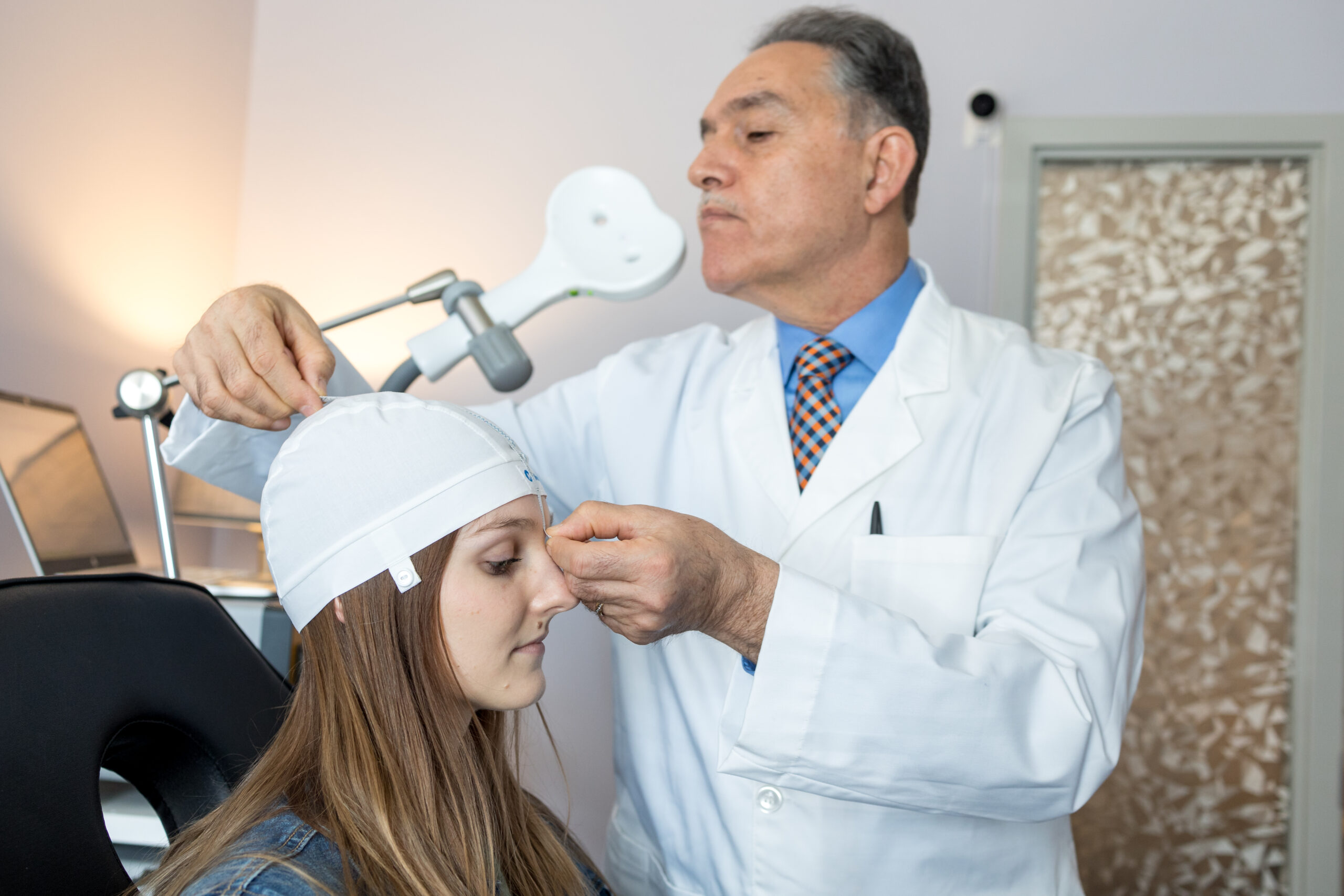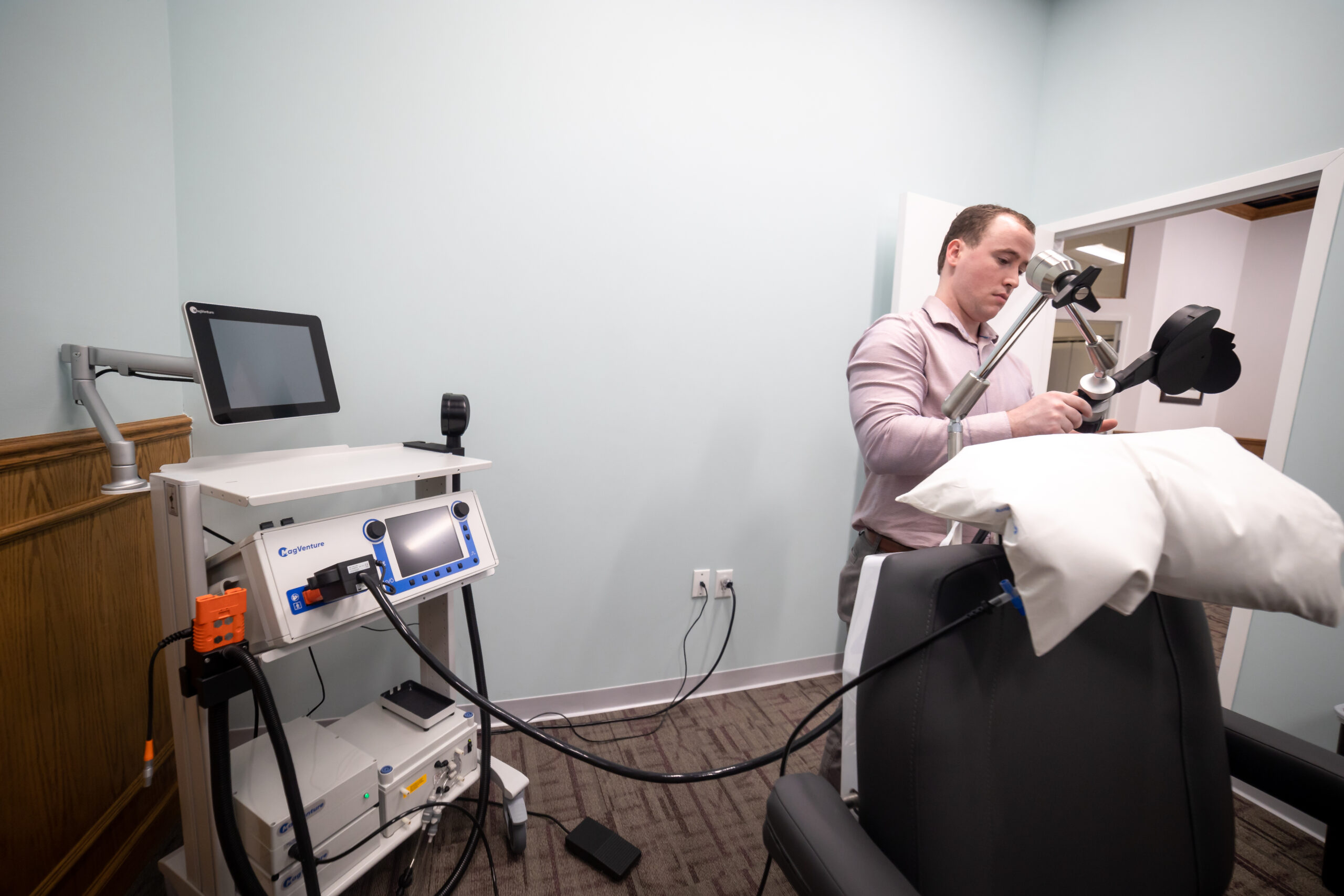When we embark on the journey to understand any groundbreaking medical innovation, we often encounter a path paved with attempts, failures, and ultimately, successes. Transcranial Magnetic Stimulation, or TMS therapy, is no exception. We’ll now delve into the fascinating process of early TMS protocols, shedding light on the trials, errors, and breakthroughs that have contributed to the therapy we know today.
Breaking New Ground: The Birth of TMS Therapy
When Anthony Barker and his team first invented TMS in 1985, they were venturing into largely uncharted territory. The goal was to create a non-invasive way to stimulate the brain, an ambitious aim that required innovative thinking and rigorous experimentation.

Experimenting with Protocols
At first, Barker’s team experimented with different protocols, attempting to understand the effects of different frequencies, intensities, and coil placements. It was a period of intense learning, with every experiment contributing a new piece to the TMS puzzle.
When Anthony Barker first invented TMS in 1985, it was a step into the unknown. Barker and his colleagues at the University of Sheffield were keen to explore the potential of this non-invasive brain stimulation technique. Their initial experiments focused on the motor cortex, a region of the brain responsible for voluntary movement, with the aim of triggering observable physical responses. They tested different variables such as frequency, intensity, and coil placement, trying to discern their impact on the stimulation results. Barker’s team quickly discovered that even slight alterations in these variables could significantly change the effects of the stimulation, laying the groundwork for the development of various TMS protocols.
Barker’s experimentation with TMS was meticulous and exhaustive. The team tested a wide range of frequencies, discovering that higher frequencies could potentially exacerbate certain symptoms, while lower frequencies might have therapeutic effects. They experimented with various intensities, initially based on each individual’s motor threshold but later branching out to explore the impact of different intensity levels on different individuals. Barker’s team also played with coil placement, beginning with the left dorsolateral prefrontal cortex but later expanding their focus to other brain regions. Through these early trials and errors, Anthony Barker and his team set the stage for the versatile TMS therapy protocols we know today.
Successes and Failures: The Evolution of TMS Therapy
Our journey through the early days of TMS therapy reveals a rich tapestry of both success and failure. But each failure was not an endpoint; rather, it served as a lesson guiding the path forward.
Finding the Optimal Frequency
Following Barker’s pioneering work, numerous researchers took up the baton to further refine the TMS protocols. One of the key areas of interest was to find the optimal frequency for TMS. Initial studies indicated that high-frequency TMS, usually defined as frequencies above 5 Hz, had the potential to exacerbate symptoms in some individuals. This observation led to a series of experiments with lower frequencies, with promising results.
For example, in a groundbreaking study conducted in the late 1990s, researchers found that low-frequency TMS (around 1 Hz) had a significant impact on reducing symptoms of depression in patients who hadn’t responded to traditional treatments. This study, among others, opened a new direction in TMS therapy, suggesting that lower frequencies could be more beneficial for some conditions. The exploration of frequency in TMS marked a significant stage in the development of the technique, shaping its trajectory and informing the protocols that would eventually lead to its FDA approval.
Intensity Matters

In addition to optimizing the frequency of TMS, researchers also recognized the importance of determining the right intensity for treatment. The intensity of TMS corresponds to the strength of the magnetic field generated by the device, and adjusting this factor can significantly affect the therapy’s impact on the brain.
In the early stages of TMS development, the intensity of the stimulation was usually set relative to the patient’s individual motor threshold – the minimum level of stimulation required to induce a noticeable contraction in a targeted muscle. However, using the motor threshold as a reference point proved to be less than ideal. Researchers found that the motor threshold could vary significantly between individuals, and even within the same individual over time. This variability posed a challenge and led scientists to conduct further studies to determine a more effective approach for setting the intensity. These studies contributed greatly to refining the protocols for TMS therapy, leading to improved efficacy and consistency in treatment outcomes.
Navigating the Coil Placement Conundrum
Finally, the placement of the TMS coil is another crucial variable that early researchers grappled with. Given that TMS works by generating a magnetic field to induce electrical currents in specific regions of the brain, the placement of the coil largely determines which area of the brain is stimulated.
During the initial experiments led by Anthony Barker, the coil was typically placed over the left dorsolateral prefrontal cortex, a region of the brain that has been linked with mood regulation. This made sense given that one of the primary applications of TMS being explored was for the treatment of depression. However, as research progressed, it became apparent that other regions of the brain could also respond positively to TMS.
Subsequent studies began to experiment with placing the TMS coil over different brain regions, depending on the condition being treated. For example, research exploring TMS for the treatment of chronic pain suggested that targeting the motor cortex could yield beneficial results. Similarly, studies on TMS for the treatment of post-traumatic stress disorder and obsessive-compulsive disorder explored the effects of stimulating different parts of the brain.
This trial and error approach to coil placement greatly expanded our understanding of the brain’s response to TMS, allowing researchers to develop more targeted and effective treatment protocols.
The Impact of Early Protocols on Today's TMS Therapy
The early trials and experiments significantly influenced the development and refinement of TMS therapy. Each step forward was built on the knowledge gained from both the successes and the failures of previous attempts.
Through trial and error, we began to understand how TMS affects the brain and how to manipulate these effects to treat various conditions. As a result, today’s TMS therapy protocols are more effective and precise, providing relief to countless individuals struggling with conditions such as depression, anxiety, and even chronic pain.
Looking Ahead: The Ongoing Evolution of TMS Therapy
As we reflect on the early development of TMS therapy, we gain a profound appreciation for the process of scientific discovery. The path to our current understanding of TMS was not straightforward, but the lessons we learned along the way were invaluable. As we continue to explore and refine TMS therapy, we remain committed to learning from our past, capitalizing on our successes, and learning from our mistakes.
Sources:
Anthony T. Barker: The Man Behind Transcranial Magnetic Stimulation – (Published 1985)
Transcranial magnetic stimulation (TMS) in controlled treatment studies: are some “sham” forms active? – (Published 1999)
The Influence of Current Direction on Phosphene Thresholds Evoked by Transcranial Magnetic Stimulation – (Published 2010)
Low-frequency transcranial magnetic stimulation in patients with cortical dysplasia – A preliminary study – (Published 2012)
Mechanisms and Effects of Transcranial Direct Current Stimulation – (Published 2017)
Effect of pulse width and pulse shape of the waveform on efficacy, safety, and tolerability of transcranial magnetic stimulation – (Published 2018)
LCD for Repetitive Transcranial Magnetic Stimulation (rTMS) in Adults with Treatment Resistant Major Depressive Disorder (TRMDD) (L34522) – (Published 2019)
Transcranial Magnetic Stimulation Coil Positioning Based on the EEG Alpha Rhythm – (Published 2020)
Efficacy of repetitive transcranial magnetic stimulation/targeting coil in cognitive impairment and Alzheimer’s disease: a pilot study – (Published 2020)
Repetitive Transcranial Magnetic Stimulation (rTMS) Systems – Class II Special Controls Guidance for Industry and FDA Staff – (Published 2021)





